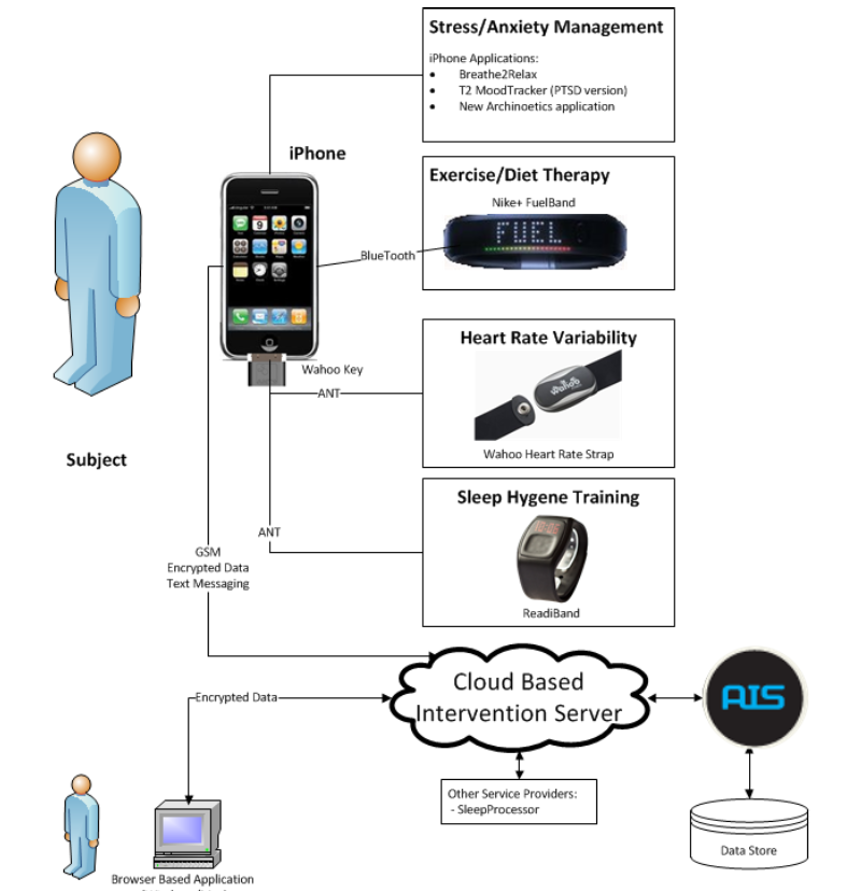The Challenge
Post-traumatic Stress Disorder (PTSD) is the most prevalent mental disorder arising from combat (Department of Veterans Affairs, 2004), but it also strikes personnel in peacekeeping missions, emergency terrorism responses, accidents, and sexual trauma. The Department of Defense and the Department of Veterans Affairs presently face the challenge of prospectively building on past lessons concerning the best ways to diagnose and treat PTSD despite an ongoing shortage of resources and professionally trained personnel.
Our Approach
Our approach has three parallel objectives:
- Collect a variety of potentially-useful patient physiological/sleep data to determine which are suitable for intelligently and objectively diagnosing PTSD.
- Build the actual PTSD classification procedure on a preliminary sample of participants.
- Develop a stand-alone, patient-wearable system (hardware and software).
By undertaking this three-part parallel approach, we will:
- Streamline the PTSD profile exploration effort, by taking advantage of commercially-available sensors while concurrently building the full patient-wearable system.
- Ensure that the finalized classification / feedback system contains only what is needed to collect and analyze the relevant data streams.


